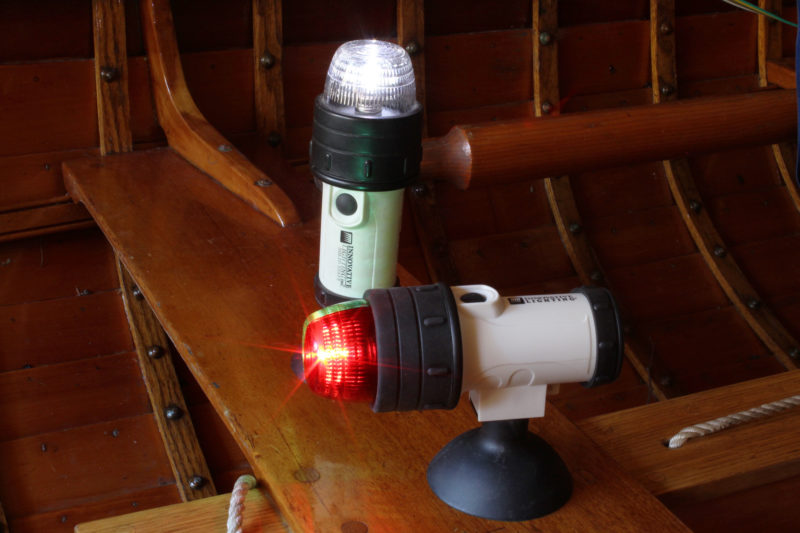 SBM
SBMThe lights come with suction cups, as seen here, or with clamps.
Small-boat cruisers rarely travel at night intentionally, but sometimes we get caught out late or we need a predawn start to catch a favorable tide, like I did while rounding British Columbia’s Cape Caution last year. Between sunset and sunrise, we need navigation lights to comply with Coast Guard regulations and to ensure we are seen by other boaters. As our boats rarely have a built-in power supply, portable, battery-powered lights are a good solution.
There are a number of configurations that meet the regulations for unpowered boats under 20′, but for several years I have used two lights, a bow light and a stern light, from Innovative Lighting in Iowa. They are built with a molded body protected with shock-resistant neoprene; one light has a combined red and green lens and the other has a white lens. Their LEDs are powered by four AA batteries. They can be bought with either a screw-clamp mount or a suction-cup mount. I have the clamp mounts and clamp the bow light to the top part of my stem right forward. The stern light has an 18” pole with a clamp on the bottom, which I fasten to my transom. With both clamps, I use additional pads of nonskid material to provide extra grip and protect finish.
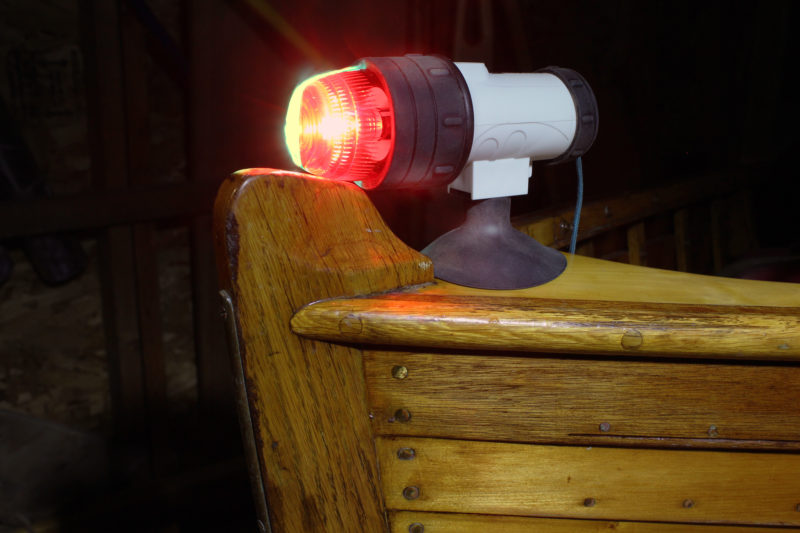 SBM
SBMThis suction-cup version of the bow light holds well to the arched-but-smooth varnished surface of this Whitehall’s breasthook. A tether secured to the treaded insert at the back of the light’s case provides security if the suction cup loses its grip. In testing, this light was left on for 80 continuous hours. At the end of that run, the intensity of the light had grown dim, but at 72 hours it was still clearly visible at 1/4 mile.
I made two modifications to fit the lights to my boat, FIRE-DRAKE. The bow light clamp, from the factory, is a parallel to the light, so if I were to apply the clamp to the sides of the stem head, the light would point to one side, rather than forward. To solve the problem and put the light at a right angle to the clamp, I filed a shallow notch in the housing and refastened the clamp bracket. The white light for the stern shines 360 degrees, which meets the requirements for powerboats and anchoring, but 135-degree visibility is required for sailboats and rowboats. I made a mask of Gorilla tape to cover the forward two-thirds of the lens, which isn’t elegant, but does the job and preserves my night vision when rowing.
The lights feel robust and have an O-ring that waterproofs the assembly where the lens screws onto the one-piece battery compartment. The push-button power switch has a soft rubber cover. The clamps are powder-coated aluminum U-channels with a fine-threaded coated steel screw and end pad.
To me, the lights appear at least as bright as built-in 12V powered lights, but I don’t have independent confirmation from other boaters how far they can be seen. I also don’t know how long the batteries will actually last, and the manufacturer makes no claims, but I have used them for an entire night a couple of times. I suspect that the life is likely in the dozens of hours at least, possibly hundreds.
The lights are rain-proof, but I discovered, accidentally, that if submerged in seawater for too long, the waterproofing does not keep the water out and the innards can corrode. It’s a good practice to take the batteries out of devices you won’t be using for an extended period, lest they leak and cause corrosion. I now keep the lights in a dedicated dry bag until I need them and take the batteries out between cruises. Having eliminated these operator errors, the Innovative Lighting units have been reliable.![]()
Alex Zimmerman is a semi-retired mechanical technologist and former executive. His first boat was an abandoned Chestnut canoe that he fixed up as a teenager and paddled on the waterways of eastern Manitoba and northwestern Ontario. He started his professional career as a maritime engineer in the Canadian Navy, and that triggered his interest in sailing. He didn’t get back into boatbuilding until he moved back to Vancouver Island in the ’90s, where he built a number of sea kayaks that he used to explore the coast. He built his first sail-and-oar boat in the early 2000s and completed his most recent one in 2016. He says he can stop building boats anytime.
The running lights are available from Innovative Lighting for $31.98 each and from marine and online retailers for as low as $26.22.
Is there a product that might be useful for boatbuilding, cruising or shore-side camping that you’d like us to review? Please email your suggestions.




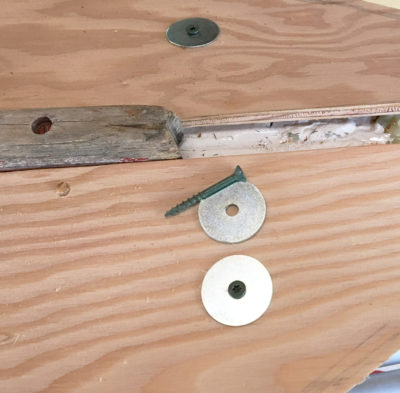
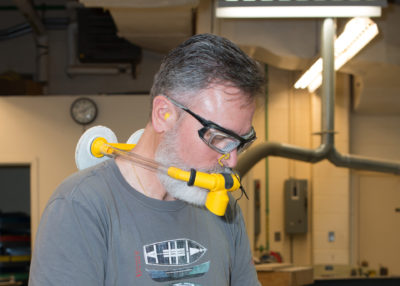
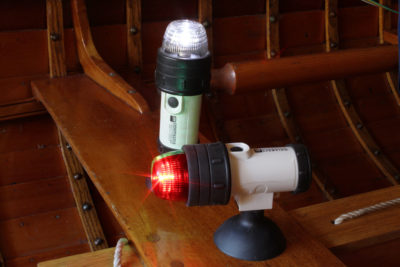
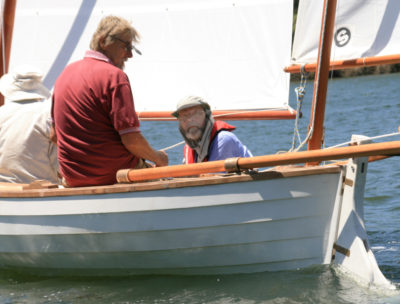
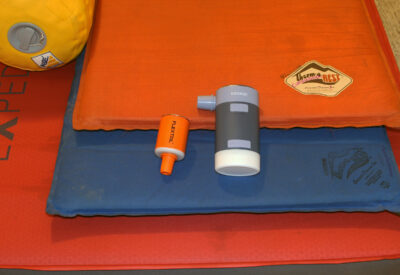
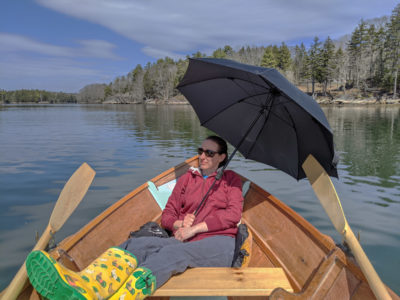
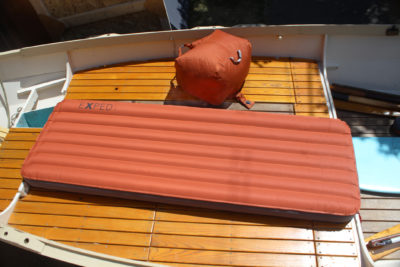
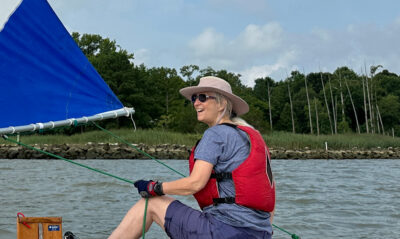
Alex,
This is a very timely and worthwhile article. As boaters, we often get so excited about getting out on the water for the first time each year that we forget mundane, but important and necessary safety items like these. I confess that more than once I’ve been caught out after dark with nothing more than a flashlight aboard. Thanks!
Andre de Bardelaben
I was issued a caution by a zealous police patrol for not having lights on my rowboat. This was at 11 am on a sunny day within 100′ of my dock. I know the officer was mistaken because I teach boating courses, but arguing would probably have invoked further erroneous cautions. Since then I have always had a light attached to my PFD, but these lights would be even better.
These Attwood navigation lights work great on my 14′ john boat. The stern light is bright and the bow lights (red and green) are perfect. Both appear to have great visibility at night. The clamps are a perfect fit without getting in the way. Not sure how they’ll hold up with the weather but I purchased a separate waterproof box to stow them away.